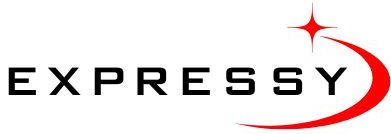A Demat account is used to safely hold your shares and securities in digital form, just like a bank holds your money. A Trading account, on the other hand, lets you buy and sell those shares in the stock market. Both accounts work together to help you trade stocks online easily and securely.
What is a Demat Account?
A Demat Account (short for Dematerialized Account) is used to hold your investments in digital form. This includes shares, mutual funds, ETFs, and other financial securities. It replaces the old method of holding physical share certificates.
When you open a Demat Account, you are given a unique number that lets you manage your holdings electronically—similar to how a bank account works for your money.
Why You Need a Demat Account
- Stores your financial securities safely in electronic form.
- Eliminates risks like theft, loss, or damage of physical documents.
- Lets you manage multiple types of investments in one place.
What is a Trading Account?
A Trading Account is required to buy or sell shares on stock exchanges like NSE or BSE. Once your Demat account is active, a Trading account helps you place orders and complete transactions in the stock market.
You’ll get a unique trading ID when you open this account, which is used every time you make a trade.
Why You Need a Trading Account
- Enables you to place buy/sell orders for stocks and other instruments.
- Directly connected with your bank and Demat account for smooth transactions.
- Gives access to multiple exchanges including NSE, BSE, NCDEX, and MCX.
Difference Between Demat and Trading Account
| Feature | Demat Account | Trading Account |
| Purpose | Holds shares and securities electronically | Used for buying and selling those securities |
| Function | Works like a savings account for your stocks | Works like a transaction account for placing orders |
| Role | Keeps your investments safe in digital format | Gives access to the market for trading |
| Operation | Maintains a record of what you own | Maintains a record of what you buy and sell |
| Identifier | 16-digit unique Demat number | Unique Trading ID from your broker |
How to Open a Trading Account
- Choose a trusted broker or brokerage platform.
- Fill out the account opening form.
- Upload KYC documents (ID, address proof, PAN, etc.).
- Wait for verification from the broker.
- Get your account login details once approved.
Can You Open One Without the Other?
- Only Demat Account: Yes, if you only want to hold securities (but not trade them).
- Only Trading Account: Only possible if you’re trading in F&O or currency markets, which are cash-settled and don’t require holding stocks.
For equity trading, both accounts are necessary.
Fees and Charges You Should Know
| Charge Type | Description |
| Account Opening Fee | Cost to open your Demat & Trading accounts. Some brokers offer this for free. |
| Demat/Remat Charges | For converting shares between physical and digital formats. |
| Annual Maintenance Charges (AMC) | Yearly fee for maintaining your Demat account. |
| Brokerage Charges | Fee for each trade you make, charged by your broker. |
| Off-Market Transfer Charges | Fee for transferring shares between Demat accounts without going through the exchange. |
Can You Have One Account Without the Other?
Technically, yes. You can open just a Demat or just a Trading account.
But practically, both are needed to buy and hold shares. That’s why brokers offer them as a combo — for convenience and seamless investing.
Some banks even offer 3-in-1 accounts (Bank + Demat + Trading) for easier management.
Final Thoughts
Both Demat and Trading accounts are essential if you want to invest or trade in the stock market. While the Demat account safely holds your shares and other securities, the Trading account is used to buy and sell them.
Even though they serve different purposes, they work together to make the process of online investing smooth and easy. With today’s technology, opening both accounts has become quick and simple—most brokers even let you do it fully online in just a few minutes.
If you’re planning to step into the world of investing, understanding how these accounts work is the first and most important step. Choose a best stock broker, compare charges, and start your journey toward building wealth through smart investments.












